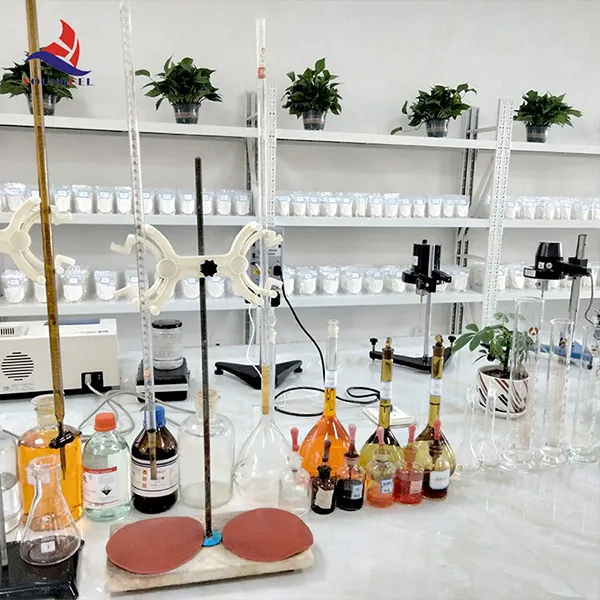Hydroxypropyl Methyl Cellulose (HPMC) An Overview
Hydroxypropyl Methyl Cellulose (HPMC) is a versatile cellulose ether that has garnered significant attention across various industries due to its unique properties and functionalities. It is derived from natural cellulose, making it environmentally friendly and biodegradable. HPMC has found applications in pharmaceuticals, food, construction, and cosmetics, among other fields.
Chemical Structure and Properties
HPMC is synthesized by the reaction of cellulose with propylene oxide and methyl chloride. The resulting compound consists of hydroxypropyl and methyl groups attached to the cellulose backbone. This modification enhances the solubility of cellulose in water, a property that is vital for its various applications.
Physically, HPMC appears as a white to off-white powder that is odorless and tasteless. It is soluble in water, forming a clear, viscous solution. The viscosity of HPMC solutions can vary depending on the degree of substitution and the concentration of the polymer. Typically, it exhibits excellent thermal stability and can withstand a range of pH levels, making it suitable for use in diverse formulations.
Pharmaceutical Applications
In the pharmaceutical industry, HPMC is widely used as a binder, thickening agent, and coating agent in tablets and capsules. Its film-forming ability allows for controlled release formulations, which is critical for enhancing bioavailability and therapeutic efficacy. HPMC is also utilized in ophthalmic solutions as it provides moisture retention, enhancing comfort for users. Its biocompatibility further makes it a preferred choice for various pharmaceutical applications.
Role in Food Products
HPMC has gained recognition in the food industry as a food additive. It is often used as a thickener, emulsifier, and stabilizer, contributing to the texture and consistency of food products. In gluten-free formulations, HPMC serves as a binding agent, mimicking the properties of gluten. Due to its ability to retain moisture, HPMC is also used in baked goods to maintain freshness, ultimately improving the shelf life of food products.
chemical hpmc hydroxypropyl methyl cellulose

Construction Applications
The construction industry has embraced HPMC due to its thickening and water-retention properties. It is commonly used in tile adhesives, joint compounds, and exterior insulation and finishing systems (EIFS). In these applications, HPMC ensures better workability, enhances adhesion, and reduces the risk of cracking, thus improving the overall durability of construction materials.
Cosmetic Uses
In the cosmetic sector, HPMC is valued for its film-forming capabilities and emulsifying properties. It is commonly found in products such as lotions, creams, and gels. HPMC provides a pleasant texture and enhances the stability of emulsions, making it an essential ingredient in many personal care formulations. Its ability to retain moisture makes it beneficial in hydrating products, appealing to consumers seeking effective skin care solutions.
Environmental Considerations
As consumers become increasingly aware of environmental issues, the demand for biodegradable and non-toxic ingredients has surged. HPMC, being derived from natural cellulose, meets these criteria, making it a favored option among manufacturers aiming for sustainable products. The use of HPMC contributes to a lower environmental impact compared to synthetic alternatives.
Conclusion
Hydroxypropyl Methyl Cellulose is a multi-functional ingredient that has established itself as an indispensable additive in various industries. Its unique chemical properties, combined with its biocompatibility and environmental friendliness, make HPMC a go-to choice for formulators across pharmaceuticals, food products, construction materials, and cosmetics. As industries continue to seek sustainable solutions, the significance of HPMC is likely to grow, making it a vital component in future formulations. Understanding its properties and applications will undoubtedly lead to further innovations, as researchers and manufacturers explore its full potential in sustainable product development.
-
Rdp Powder: Key Considerations for Wholesalers in the Building Materials IndustryNewsJul.08,2025
-
Key Considerations for Wholesalers: Navigating the World of Hpmc - Based ProductsNewsJul.08,2025
-
Hpmc Detergent: Key Considerations for WholesalersNewsJul.08,2025
-
Key Considerations for Wholesalers: China Hpmc For Tile Adhesive, Coating Additives, Concrete Additives, and MoreNewsJul.08,2025
-
Crucial Considerations for Wholesalers: Navigating the World of Construction MaterialsNewsJul.08,2025
-
Key Considerations for Wholesalers Sourcing Additive For Cement, Additive For Concrete, Additive For Putty from Additive Manufacturer Shijiazhuang Gaocheng District Yongfeng Cellulose Co., Ltd.NewsJul.08,2025




